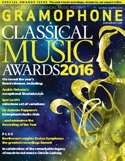Texte paru dans: / Appeared in: |
|
|
Outil de traduction (Très approximatif) |
|
|
Reviewer: Philip Kennicott
On the page, Jones’s Lessons look both simple (often written in two parts) and occasionally eccentric, with dance movements given familiar titles (Allemandes, Gigues, Gavottes) but sometimes odd rhythmic or structural twists. In the Third Lesson, Meyerson hears echoes of Scarlatti in the Gigue, which does indeed suggest Scarlatti’s particular keyboard virtuosity, the basic two-part division of his sonatas and the sudden harmonic changes (especially in the second half) so characteristic of the Italian composer’s idiosyncratic style. In other Lessons, CPE Bach is in the wings, with melodic lines that make adventurous upward leaps before resolving with Bach’s particular flair for elegantly awkward surprise. Meyerson doesn’t quite recompose these works but she is happy to take the music as a basic template for extensive elaboration. She may repeat a line for effect or end a conclusive phrase with a large, improvised flourish. I can’t find a single instance in which she oversteps the bounds of good taste and, more importantly, faithful service to the spirit of the music. Furthermore, Meyerson is alert to the background musical ambience of this material, the larger complexity of London as musical entrepôt, with influence not just from major figures such as Handel, CPE Bach and Johann Christian Bach but also from the French harpsichordists, folk music and, in one delightful case, bagpipe music (she adds a drone figure in the accompaniment and places the melody an octave lower on the four-foot stop to heighten the nasal effect). Jones’s music comes alive through her efforts, and this double-disc set far transcends the dutiful rehabilitation of a neglected minor composer. It entertains. |
|




